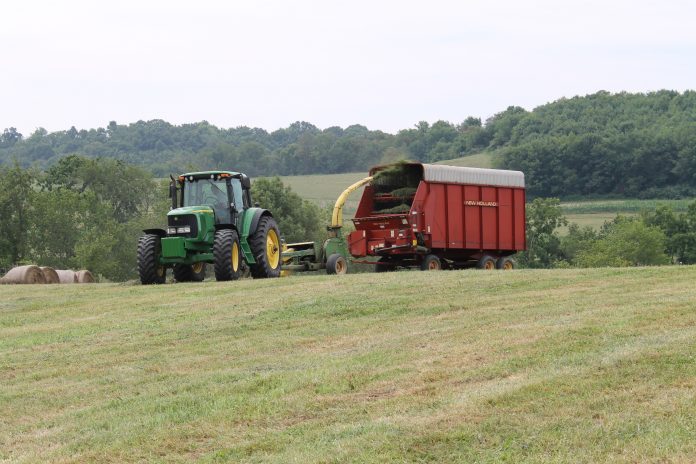As we enter silage harvest season, now is the perfect time to sit down to evaluate your current corn varieties to make a good selection for 2023. Did you have good disease resistance, what is the nutritional value, and did you get the yield you were hoping for? If you are in Trumbull County like me, it may be hard to get an accurate assessment of a hybrid’s potential due to the dry weather, but that is a data point for selecting a potentially drought-resistant variety. Mother Nature will always win when it comes to the growing season, but we can choose hybrids that will provide the best potential for a good silage harvest.
Choosing a corn hybrid for silage can be a little overwhelming with the number of options available. You can choose standard grain hybrids to harvest for both grain and silage, silage-specific hybrids, brown midrib (BMR), conventional, transgenic and the list goes on.
Each option has tradeoffs that you will need to balance. Grain hybrids are a good choice if you want to harvest shelled corn to sell or feed in addition to your silage harvest. Typically grain hybrids will have lower nutritional value than silage-specific hybrids. BMR hybrids have increased digestibility, but don’t always have the best agronomic traits with typically lower yields. Silage-specific hybrids are a good balance between the BMR and grain hybrids with good yield potential and generally higher nutritional value.
Milk per acre
An added benefit of choosing a silage-specific hybrid is that most seed companies provide values or ratings for nutrition and pounds of milk per acre.
The MILK 2006 silage quality index was developed by the University of Wisconsin to evaluate the energy content of silage hybrids to predict milk production per ton harvested. This is reported as milk per ton and can be used to select hybrids that will maximize milk production.
Hybrids with better ratings for milk per ton will have better values for starch, protein, fiber, and digestibility. Milk per ton will tell you the quality of the silage, but milk per acre values will provide more yield information. For example, BMR hybrids may have good ratings for milk per ton due to high digestibility, but low ratings for milk per acre due to low yields. Hybrids with good ratings for milk per ton and milk per acre should be considered, but these values do not provide information about other agronomic traits.
Agronomic traits such as disease and pest resistance, herbicide technology, stalk quality, etc. should be used in conjunction with milk per ton or milk per acre values to find a hybrid that suits your local growing conditions.
Disease
If you’ve walked through your corn in the last few weeks, you’ve likely noticed corn leaf diseases and possibly some ear molds, both of which can significantly reduce silage quality. Ear molds also have the potential to introduce mycotoxins. Research from the University of Minnesota and University of Wisconsin has shown that hybrid selection for genetic disease resistance is more important for silage quality than a protective fungicide spray. As we also start to watch for tar spot in Ohio, extra consideration should be given to resistant varieties.
Transgenic traits
The decision between transgenic trait (Bt, herbicide resistance) packages and conventional hybrids should be made based on management considerations. Studies have shown that there is no yield potential difference between transgenic and conventional unless sufficient pest pressure is present.
Some corn pest species such as earworm, and western bean cutworm have shown resistance to some Bt traits. If you have consistent problems, you may want to consider switching to a hybrid with the Vip3Aa20 trait.
Outside rating system
If you start looking through the multiple seed catalogs and start to get overwhelmed with the different hybrid rating systems, don’t worry, you’re not alone. Ohio State University partnered with Michigan State University in 2020 and 2021 to evaluate corn silage varieties for Ohio dairy farmers. You can find the 2021 report at https://varietytrials.msu.edu/corn/. This report compares varieties using the same values, so you don’t have to interpret each seed company’s rating system. It’s an apples-to-apples comparison.
No one hybrid is the best for silage, but by balancing the tradeoffs for milk per ton and agronomic traits you can find a reliable hybrid for 2023. On-farm trials are always a good way to test hybrids for your farm and planting multiple hybrids will also spread your risk. Have a safe and successful silage harvest.













